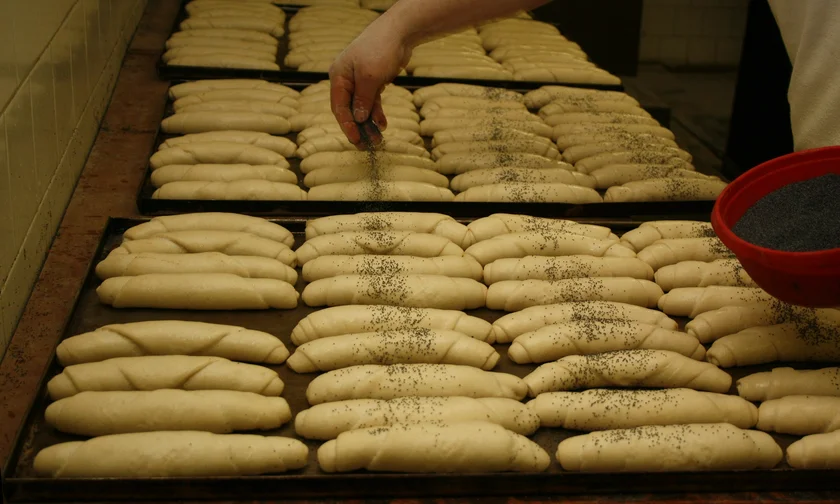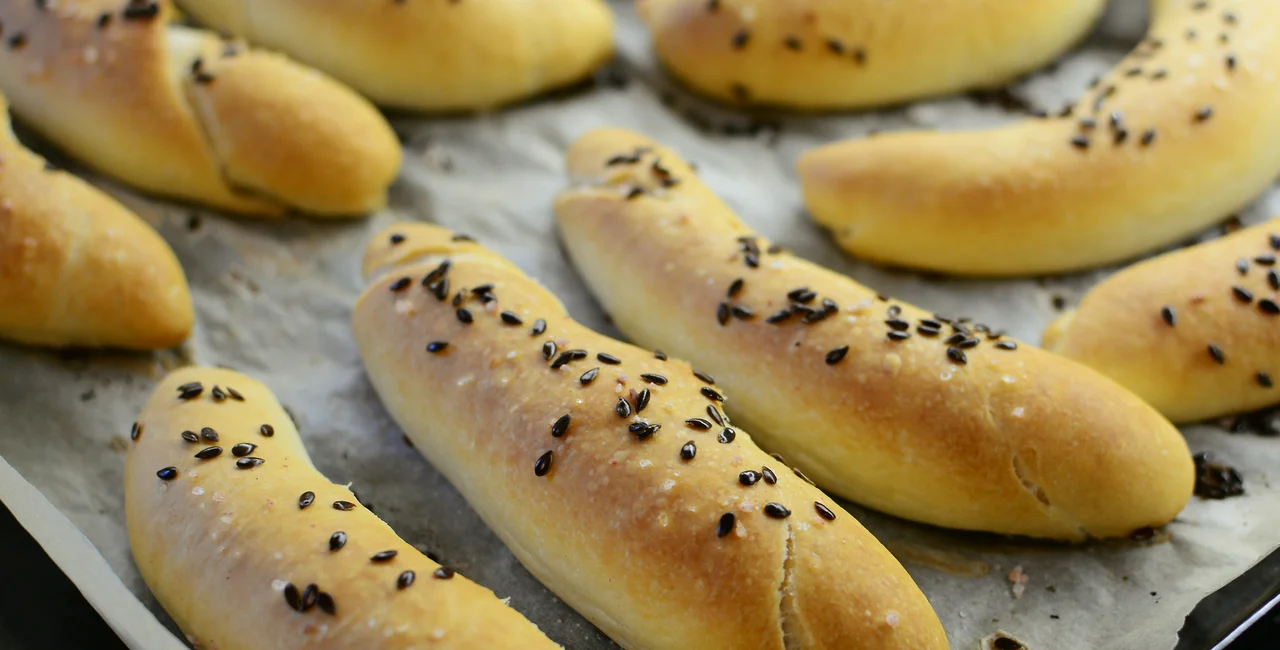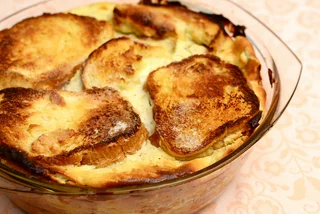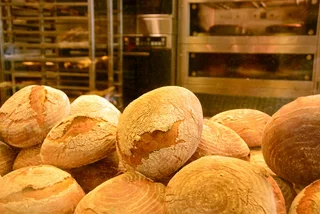The shape of the rohlík, the traditional Czech bread roll is described by the Wikipedia satire site Necyklopedie as resembling that of a cigar, a boomerang, and, in much less G-rated terms, a “Pindus Vulgaris”.
Whatever shape you see when you come across a rohlík in the bread bin or on the bakery shelf, one thing is for certain: nothing is quite as Czech as this beloved baked product.
In its purest form, accompanied by cocoa or tea, it is the ultimate Czech breakfast: soft and chewy with a neutral flavor that’s well-suited to jam and honey (and there is definitely a right and wrong way to butter your roll — flat side only, please).
It’s a filling sidecar to goulash soup, a sturdy vehicle for cold cuts, and a handy holder for a hot dog. The dough, made from lard, can also be topped with poppy seeds, caraway, or salt. Variations on the traditional white roll include the longer thinner pivní rohlík (beer roll).
It’s said that the first rohlík was baked by the baker Peter Wendlerin in honor of the Viennese victory over the Ottoman Empire in 1683 when the Turks besieged Vienna. The crescent-shaped pastries were meant to be a symbol of Islam.
It’s more likely that rohlíky originated in Central Europe much earlier, though, with mentions dating all the way back to the 10th century when they were said to have been eaten in monasteries as Easter pastries.
Today, 13 million rohlíky are produced in the Czech Republic daily, and around eight million are supplied to supermarket chains.
Where to find the best is hotly debated by locals but Antonínovo pekařství and Slovenská pekárna in the Holešovice Market Hall 22 are top contenders.

Despite the fact that the typical supermarket rohlík can end up stale and chewy (in extreme cases, Necyklopedie argues it can serve as a deadly weapon!) it remains a fixture in shopping baskets due to its affordability: according to the Association of Bakers, Czechs buy rohlíky on average for CZK 1.9, a disproportionately low price.
In fact, the classic bread roll has recently been the subject of a price war. German retail chain Lidl recently downgraded the price of rohlíky to a mere CZK 1.50, a move strongly criticized by the Czech Association of Confectioners and Bakers as undervaluing the product.
- Approximately 700 classic bakeries produce bread in the Czech Republic.
- 275,000 tons of bread is produced a year, one million loaves a day.
- The average Czech consumes 40 kilograms of bread a year.
- The Czech Republic has the fifth cheapest bread in the European Union.
- The average Czech spends about CZK 120 a month on bread.
They say lower prices could potentially lead to production problems and the replacement of uneconomical, freshly-baked rohlíky with frozen, semi-finished products finished in-store.
The association claims even the standard retail price seen in other chains, CZK 1.90, does not correspond to the real value of the product; ten years ago, rohlíky were sold for CZK 2.50. Representatives of the Kaufland and Billa supermarket chains have said they will not join Lidl in cutting prices, as to do so puts unfair pressure on bakeries to lower their selling prices.
Manufacturers might be feeling the pinch of lower prices for rohlíky. But Czechs are unlikely to give up on their favorite bread product, leaving the enduring history of the rohlík to proudly roll on.












 Reading time: 3 minutes
Reading time: 3 minutes 




























